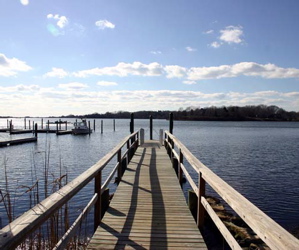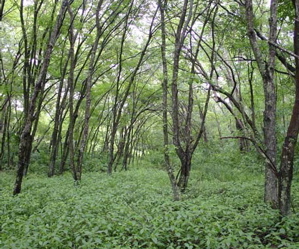




Protecting Charlestown’s Beautiful Environment

Maple Lake In recent decades Rhode Island’s population has remained stable while our area has nearly doubled in population. Despite the dramatic increase in population over the last thirty years, our town remains largely undeveloped. Charlestown contains a diversity of natural resources that feature a dramatic geological history and many unique ecological communities. Besides protecting groundwater and wildlife habitat, these natural areas provide some of the best hiking, hunting, fishing, swimming and boating opportunities in Rhode Island. The very high quality of life we enjoy has made Charlestown one of the fastest growing communities in the state.

Mill Pond Fiscal analysis of a subdivision approved in Charlestown estimated the developed property would pay $76,000 in taxes. The school and municipal costs that will be incurred because of the new subdivision are estimated by the developer at $155,000 each year. This one subdivision represents a net loss to the town of $79,000 which will need to be paid by taxpayers every year forever. The development of this subdivision, which borders Burlingame Management Area, also represents a lost opportunity to expand the park system. For taxpayers, purchasing the land from the previous owner and adding it to Burlingame would have been less expensive than development. Unfortunately, taxpayers were never given this choice.
Throughout the state, millions of dollars are being spent each year to build new schools and roads and extend utilities to a population that spreads but never really grows. In Charlestown, we tend to think of our community’s growth as a local issue, but our suburbanization is increasingly viewed as a threat to the state’s overall economy, affecting everything from tourism to electricity rates.
Academic studies, economic analysis and first hand experience have shown that open space conservation is not an expense, but an investment that produces important economic benefits for local communities. New development requires support in the form of roads, schools, police, fire protection and other services. While the net economic impact of residential development is often negative, the net impact of undeveloped open space is positive. Open space protects a community’s scenic character and environment, but it also has the potential to create jobs, provide recreational opportunities, enhance property values, attract tourists, decrease the cost of community services and improve the quality of life.
Open space acquisition will not and should not stop development, but it can enhance the livability of our community and ensure that as Charlestown grows we maintain our special, natural character. In the long term, the economic advantage will go to communities like Charlestown that are able to guide growth through land conservation.
We believe it is important to support local politicians who understand the economic and social importance of land conservation. In the long term, our community needs to analyze it’s investment in residential development and determine if an investment in natural resources could be less expensive and have more positive results.
Charlestown’s undeveloped lands are a treasure that sustain our economy and our quality of life. CCA believes we need to take a more active role in shaping our own future. We are the people who live in this beautiful place and as former Rhode Island Governor Lincoln Almond once said, “its an investment we can’t afford not to make.”
In 2001, The Southern New England Forest Consortium released their economic study titled Land Conservation, Development and Property Taxes in Rhode Island. This widely respected study of all Rhode Island towns was funded by the EPA, performed by economist Deb Brighton and reviewed by many planners, economists and other experts. This study found that on average, the tax rate is lower in the towns that have the most open land and higher in the towns that have the least.
Land owners have a right to develop their land, that right is protected by state and federal law and locally is defined in our zoning ordinances. As a community we have the ability to manage the kind and scale of development, but unless we provide land owners with alternatives to subdivision and development, all of Charlestown’s remaining open land will be developed.
One way to keep land open is to support local agriculture. Charlestown still has many working farms, both large and small. Our larger farms are under tremendous development pressure. These farms produce meat, honey, vegetables, eggs, flowers, compost, and other products for the local market. By supporting these local farms, we help the land stay open.
For a list of local farms go to this web site maintained by Farm Fresh Rhode Island.
The salt ponds in Charlestown are part of Quonochontaug Pond, Ninigret Pond, and a small piece of Green Hill Pond. This map shows Charlestown’s Salt Ponds and also the land areas where surface and ground water drain to the ponds.
A growing population threatens to overwhelm the capacity of the salt ponds to absorb wastes, provide shelter for boats, attract residents and tourists and support real estate values. Large areas of the salt ponds are poorly flushed, which makes them valuable as fish and shellfish nurseries but, also makes them particularly susceptible to eutrophication and bacterial contamination.
In the salt pond region, failing and substandard septic systems and the increasing number of septic systems of all types are the single most important source of bacterial and nutrient contamination to these coastal waters. Openspace acquisition in the coastal moraine has been an important protective measure for the coastal ponds, but more work needs to be done.
There are government and non government organizations involved in protecting Charlestown’s coastal salt ponds. Visit these web sites to learn more about what is being done and what work still needs to be done to protect our beautiful ponds.
Charlestown’s On-Site Wastewater Management Program (OWMP) is a tool box of strategies designed to ensure the proper function and maintenance and the proper design, location and construction of on-site sewage disposal systems. When properly developed and implemented an OWMP can help maintain property values and preserve and improve the quality of valuable ground and surface water resources. Charlestown’s OWMP contains the following principle components:
1. Public outreach, education and technical assistance.
2. A septic system inspection and maintenance program.
3. Zoning and subdivision provisions related to septic system setbacks and performance standards.
4. A financial incentive program for the repair and upgrade of failing and substandard systems.
The Wastewater Management page at the Town Hall Website has contact information for Matt Dowling, the full time Wastewater Manager. His phone number is (401) 364-5030. This page also has a list of approved septic system pumpers and inspectors, a copy of the Wastewater Ordinance that requires all property owners to have their systems inspected regularly and pumped as needed, and a copy of the On-Site Wastewater Management Plan which explains the whole program.
There are many more topics that we will cover on the issue of Charlestown’s Environment. Check back to this page for the following topics and more:
1. Pawcatuck River.
2. Aquifers and drinking water.
3. Wildlife Habitat.
4. Greenways and our park system.
5. Freshwater ponds.
6. Alternative energy.
7. Geology.
8. Forest ecology.
If you have ideas for topics that we should cover, please write us at mail@CharlestownCitizens.org and tell us. Please also consider writing text to be included on these pages.